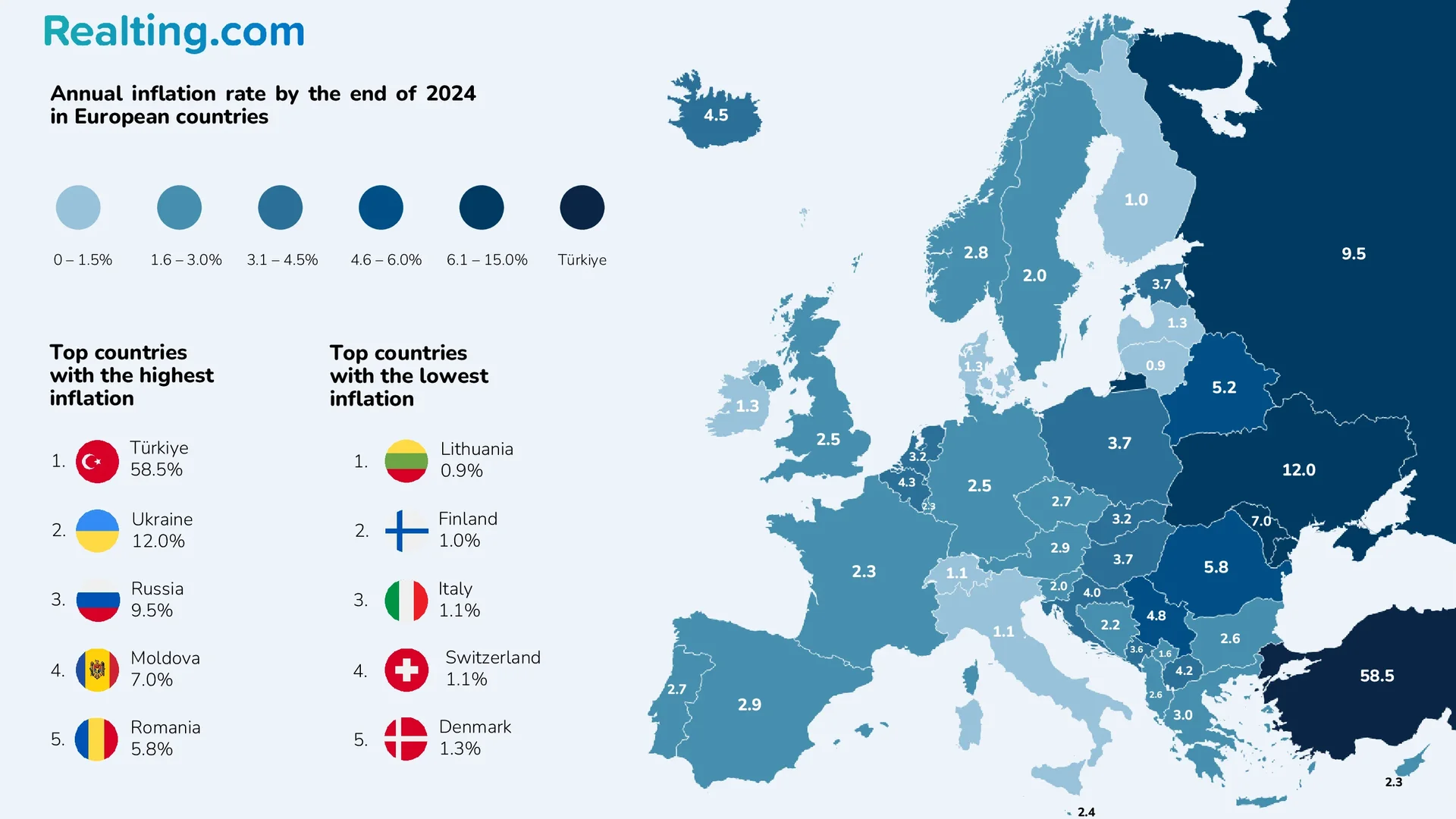
Inflation 2024: From 0.9% to 118.9% — In Which Countries are Prices Rising the Fastest?
In 2024, the global economy showed uneven price growth dynamics, from almost imperceptible inflation in some developed countries to shocking triple-digit rates in some regions of the world. Against the backdrop of the global picture, the situation in Europe is of particular interest — a continent with diverse economies, where the spread of inflation rates is also significant: from a stable 0.9% in Lithuania to a record 58.5% in Turkey.
Our research brings together data from the world’s top inflation leaders and takes a detailed look at Europe, showing where the cost of living is rising fastest and where prices are staying under control. These indicators are critical not only for understanding macroeconomic processes but also for assessing the day-to-day impact on people’s well-being, the cost of living, and the safety of savings in different parts of the world.
Inflation Rate Worldwide
First, let’s remember what inflation is.
Inflation is the increase in the general level of prices for goods and services in the economy over a certain period of time. In this case, we will consider the annual inflation rate.
The International Monetary Fund (IMF) has published data on the level of inflation observed in all countries of the world as of October 2024.
The top five countries with the highest inflation rates as of October 2024 were:
- Republic of Sudan, inflation 118.9%.
- Republic of South Sudan, inflation 79.3%.
- Venezuela, inflation 71.7%.
- Argentina, inflation 62.7%.
- Türkiye, inflation 33.0%.
Inflation Rate in Europe
Realting also looked at the annual inflation rate for 2024 in all European countries. The source of the data was the Statistical Office of the European Union for EU countries, and for all other countries, the National Statistical Offices of these countries.

According to data as of the end of 2024, there is a significant difference in inflation levels in European countries. Countries can be divided into several groups based on inflation levels:
- 0–1.5%: countries with the lowest inflation rate.
- 1.6–3.0%: countries with low inflation.
- 3.1–4.5%: countries with average inflation.
- 4.6–6.0%: countries with high inflation rates.
- 6.1–15.0%: countries with high inflation.
- Türkiye: a special category with extremely high inflation.
Top 5 countries with the highest inflation in Europe:
- Türkiye: 58.5% is the absolute leader in terms of inflation in Europe.
- Ukraine: 12.0% — the second-highest inflation rate.
- Russia: 9.5% — third place in the anti-rating.
- Moldova: 7.0% — fourth place among countries with high inflation.
- Romania: 5.8% — closes the top five countries with the highest inflation.
Top 5 countries with the lowest inflation in Europe:
- Lithuania: 0.9% is the lowest inflation rate in Europe.
- Finland: 1.0% — the second place among countries with low inflation.
- Italy and Switzerland: 1.1% — sharing third and fourth places.
- Denmark: 1.3% — closes the top five countries with the lowest inflation.
The Situation in the Eurozone
The average inflation rate in the Eurozone is in the range of 1.5–3.0%, in line with the European Central Bank’s target. There is a noticeable difference between the countries of “old” Europe, where inflation is generally lower, and the new EU members from Eastern Europe, where inflation pressures are higher.
Let’s Sum It Up
The inflation picture in Europe by the end of 2024 reflects the heterogeneity of economic development in the region. While the countries of Northern and Western Europe demonstrate relative price stability, Eastern Europe and especially Turkey face significant inflationary pressure. Such differentiation affects the purchasing power of the population and the investment attractiveness of different European regions.























